How to Make Aloe Vera Mouthwash

This post and the photos within it may contain affiliate links. If you purchase something through the link, I may receive a commission at no extra charge to you.
How to make aloe vera mouthwash, and why should you?
DIY mouthwash is an excellent addition to any oral care routine.
It has just a few natural ingredients that can improve your oral health and breath!
The best part is that it is super simple to make, way more sustainable and healthy than the store-bought ones.
Keep reading to learn more about:
- Aloe Vera Mouthwash: Ingredients overview (where to buy them plastic-free)
- How to make Aloe Vera Mouthwash: Step-by-step guide
- Zero waste mouthwash products
- FAQ
– Is homemade mouthwash safe?
– Is it safe to include essential oil in this mouthwash recipe?
– How can I make homemade mouthwash taste better?
– Why does my aloe vera mouthwash change color?
– What to do with leftover aloe vera gel?
– Are there any side effects of aloe vera gel? (caution) - Sum up

Aloe Vera Mouthwash: Ingredients overview
Before the recipe, let’s find how each ingredient we’ll use is beneficial for oral care and where you can buy them plastic-free.
Aloe vera:
Compounds in aloe vera called anthraquinones may help control bacteria that lead to cavities.
Aloe vera also has antiseptic and anti-inflammatory properties.
Clinically proven studies show that mouth rinses containing aloe vera result in a remarkable reduction in gingivitis, periodontitis, and plaque accumulation.
Where to find aloe vera leaf:
- Check at local health stores. They usually sell separate aloe vera leaves.
- You can also buy an aloe vera plant and get leaves from it.
Where to find aloe vera leaf or gel:
- Zero Waste Bulk Store (California)
- Organic Aloe Vera Gel (Etsy, the US)
- Pure Aloe Vera (Etsy, the US)
- The Good Lyfe (the UK)
- Simply Natural (the UK)
- Peace with the wild (the UK)
- Aloe Vera Gel (Etsy, the UK)
- Aloeole (Spain & Europe)

Distilled water:
Distilled water is free from any impurities removed, including minerals and microorganisms.
If you can’t find it, you can filter tap water or boil it. This won’t make distilled water, but at least it will kill bacteria and microorganisms.
- Mountain Valley (the US) sells distilled water in glass bottles, but do a quick online search to find more local options.
Baking soda:
It has significant bactericidal activity against oral bacterias.
- Arm & Hammer Baking Soda – box (link to Amazon)
- Zero Waste Bulk (the US)
- The Good Fill – bulk (the US)
- The Source Bulk Foods (the UK)
- Zero Waste Bulk Foods (the UK)
- Or local bulk & healthy food stores
Xylitol:
Xylitol is excellent for oral health as it inhibits the growth of the bacteria that cause cavities.
- Zero waste bulk (the US)
- The Source Bulk Foods (Australia)
- Bulk™ (compostable packaging, the UK, Europe)
Essential oils:
A few great options for this mouthwash recipe include:
- Peppermint oil — Peppermint oil helps to eliminate bad breath or eradicate a bad taste in your mouth. Rinsing with peppermint oil diluted in water is a popular home remedy for minor toothaches.
- Cinnamon oil — Cinnamon contains antibacterial, antifungal, and antiseptic properties. Cinnamon oil also has antimicrobial properties that protect against bacteria that can lead to tooth decay.
- Clove oil — Clove oil helps relieve tooth pain and bad breath and helps fight against gum disease. Like cinnamon oil, clove oil can also help reduce the risk of tooth decay and help fight throat infections.
- Spearmint oil — Another antimicrobial-containing oil, spearmint, helps kill germs that cause pain, disease, and decay.
- Tea tree oil — Antibacterial properties that can help control bacteria in the mouth. It helps to avoid tooth decay and plaque buildup. A study found that tea tree oil can act as an effective antiseptic solution against oral pathogens. (1)
NOTE: Before using ANY essential oil, rub a tiny amount on the inside of your elbow area to test for any allergic reaction before use.
How to Make Aloe Vera Mouthwash: Step-by-step guide
Watch my video and see the exact process, or follow the guide below:
Step 1: Make your aloe vera gel.
You can either buy or create your aloe vera gel. If you have the plant already, then I would recommend making it by yourself.
If you don’t and would like to make the mouthwash last longer, you can buy the gel online (links above).
I made my own aloe vera gel, since I was able to buy a huge leaf in my local health store.
To make the aloe vera juice, you need to:
- Wash the leaf thoroughly to remove all traces of latex, which has an unpleasant bitter taste.
- Dry it with a towel. Then, cut the large aloe vera leaf in half.
- Use a sharp knife to cut the sides of the leaf first, then the skin. Be careful, as the aloe is very slippery. Don’t include any pieces of the aloe vera skin.
- You will see the natural aloe vera gel. Use a spoon to scoop the gel into a cup.
- Wash (with a strainer) the aloe vera gel thoroughly, with water.
- Refrigerate leftover aloe vera juice for up to one week. To extend the life of the aloe vera gel, add one teaspoon of vitamin E. This vitamin is a natural preservative and can extend the life of the gel between 1-2 months in the refrigerator.
(Add 400 International Units (IU) of vitamin E for every 1/4 cup (60 ml) of aloe vera gel you make. (Source))
Step 2: Combine the ingredients.
The next step is to combine all the ingredients into a blender.
Add together:
- ½ cup of aloe vera gel (120 ml)
- ½ cup distilled water (or filtered/boiled water) (118 ml)
- 1 ½ tsp. baking soda
- 1 tsp xylitol
- 3-4 drops of peppermint essential oil (or any of the other options, that I included above)
Note: If you can’t find plastic-free distilled water, you can filter or boil tap water. This won’t make distilled water, but at least it will kill bacteria and microorganisms.
Step 3: Blend.
Blend until everything is well combined. Then pour in a jar or another container that you have.
Step 4: Store your mouthwash.
Store your aloe vera mouthwash in the refrigerator.
The mouthwash will last for around one week. If the color changes, don’t worry, this happens with the aloe vera gel (read more about it in the FAQ section below).
Be sure to label your container with the date you created the mouthwash so you know once the expiration date passes.
In case you buy your aloe vera gel, the mouthwash will be good for months.
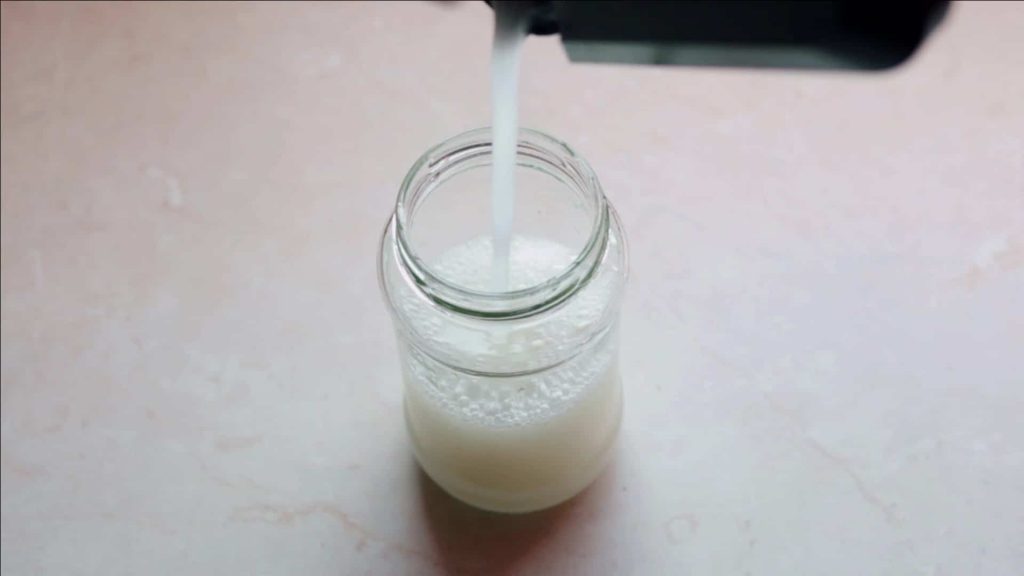
Step 5: How to use it
Shake your mouthwash before each use. Pour a small amount into a small glass.
Swish the mouthwash around your teeth for 20 to 30 seconds. In the end, you can finish with a short gargle to clean the back of your mouth and throat.
Then spit the mouthwash out. Never swallow the mouthwash.
Zero waste mouthwash products
If you would like to see s couple of zero waste mouthwash products (containing fluoride), check some low waste options below.
All of them are made by eco-friendly companies that have sustainable practices and plastic-free packaging.
- Georganics Oil Pulling Mouthwash – the UK | the US
- Georganics Mouthwash Tablets – the UK | the US
- Ruut Mouthwash – the US
- Bite Mouthwash – the US
- By Human Kind Mouthwash – the US
- On Etsy – many sellers on Etsy offer zero waste mouthwash products

FAQ
Is homemade mouthwash safe?
Yes, homemade mouthwash is safe.
In addition to controlling the ingredients you put into your recipe, you can also leave out preservatives and other harsh ingredients that many over-the-counter types of mouthwash contain.
Homemade mouthwash should cause you no harm unless you use them in high concentrations. If you’re concerned about using DIY mouthwash, talk with your dentist.
They will be able to look over a DIY recipe you’re looking to try and let you know if that’s safe or not.
Note: The recipe I shared above has been reviewed and approved by a professional dentist.
Is it safe to include essential oil in this mouthwash recipe?
Yes, as long as you’re not swallowing your mouthwash (which you shouldn’t be doing with or without essential oils!).
A review published in the March 2008 issue of Evidence-Based Dentistry found that mouth rinses containing essential oils, combined with standard home dental care, helped reduce plaque and gingivitis, which is the inflammation of the gums.
However, it’s important to note that not all essential oils are made of the same quality. This is because essential oils are an unregulated industry.
While many excellent essential oil producers are putting out safe products, it’s crucial to source quality oils from vendors and representatives you trust.
Always use therapeutic-grade essential oils.
Consult with your dentist to find brands that are safe to use.
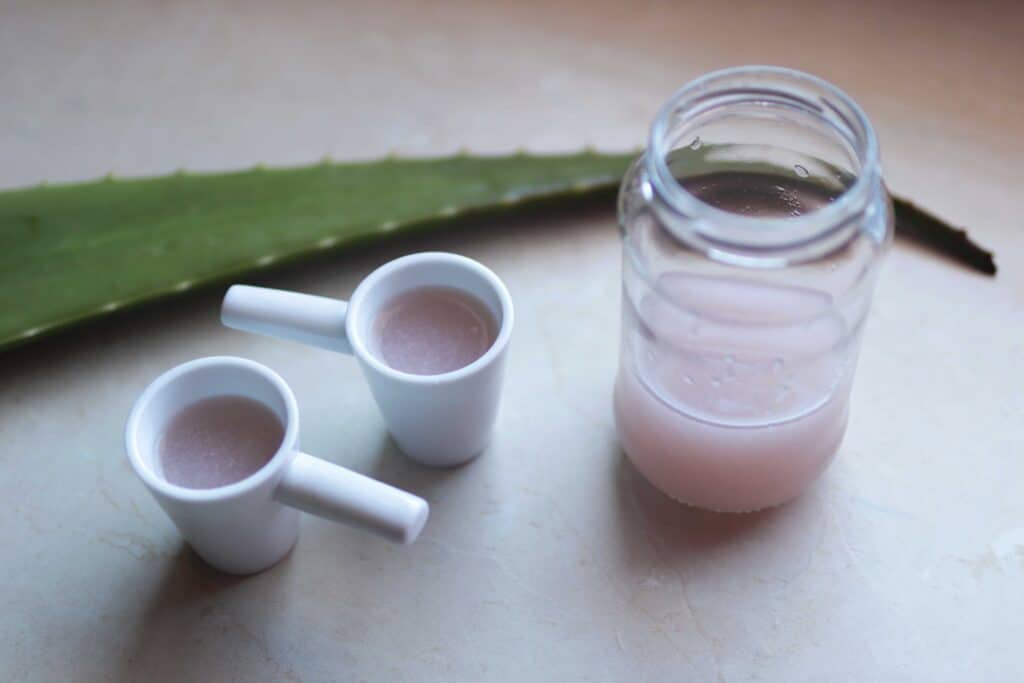
How can I make homemade mouthwash taste better?
To make your homemade aloe vera mouthwash taste better, add xylitol.
Xylitol can help neutralize acid and the bacteria that cause plaque and decay for an added flavorful and cavity-prevention benefit.
Dentists frequently recommend xylitol as it helps increase saliva production in the mouth, which is crucial in keeping teeth enamel strong.
Why does my aloe vera mouthwash change color?
Aloe vera gel tends to oxidize quickly once it is exposed to air.
The gel is likely to turn pink or even red in a matter of minutes. (see the image below for a reference)
Additionally, aloe vera plants exposed to a high level of sun or grown in poor soil can result in red aloe vera gel.
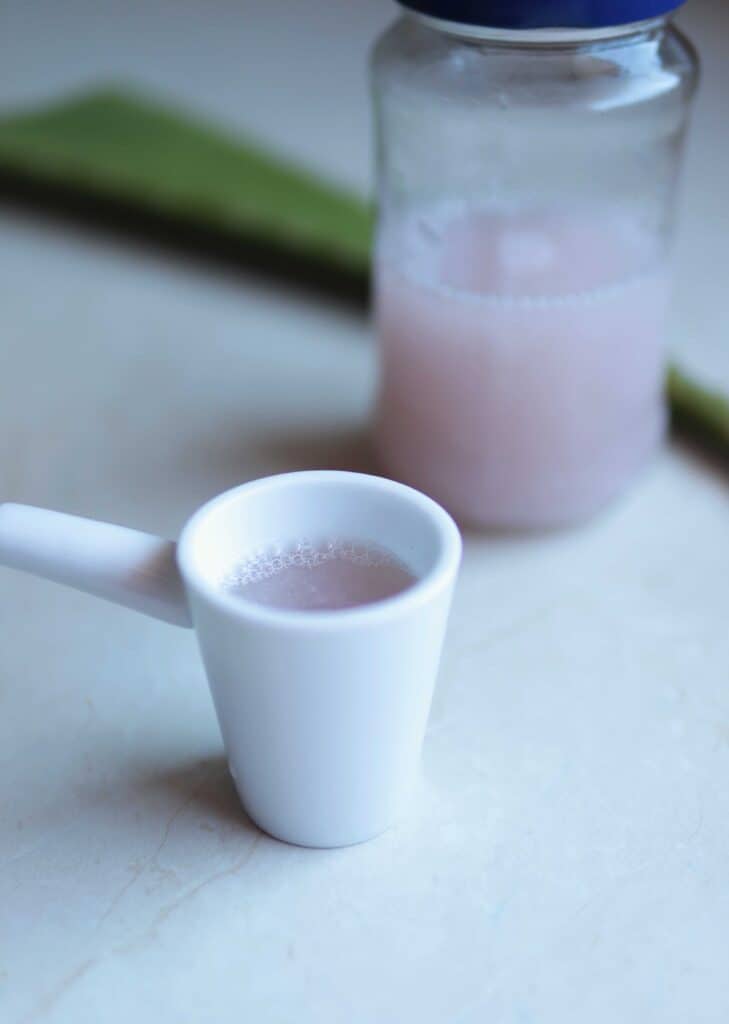
What to do with leftover aloe vera gel?
You can eat the aloe vera gel, as it offers various health benefits.
Or you can use it for another DIY recipe. Here are a few ideas:
- Add aloe vera to your smoothie
- Eat it with freshly squeezed lemon juice + agave syrup
- Combine aloe vera juice with pineapple juice
- Use it for another DIY project (check how to make moisturizing shaving gel here)
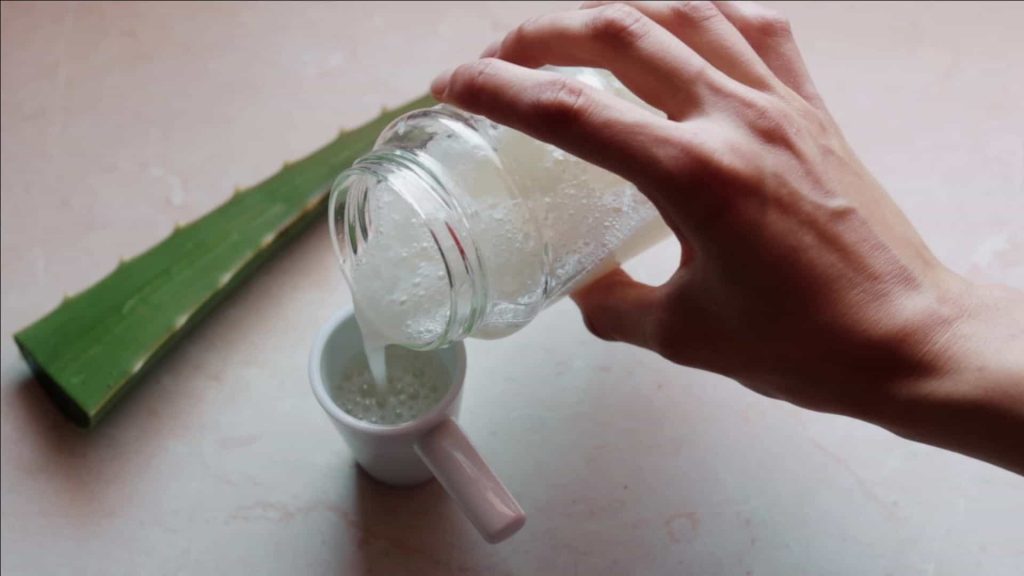
Can I freeze aloe vera gel?
Yes, you can freeze aloe vera gel.
If you don’t use it in a week or so, it may go bad. You will recognize it by the bad smell.
If you don’t plan to use it in a few days, consider freezing it. You can store frozen aloe gel in the freezer for up to 6 months.
Are there any side effects of aloe vera gel?
Aloe vera plant contains aloin, which has a laxative effect if consumed orally.
It is found on the interior part and the coating of the leaf. It is a yellowish color, and it is very bitter.
To avoid ingesting it, you should wash the leaf very well before cutting it. Also, wash the aloe vera gel once you extract it with the spoon.
Another piece of advice is to consume aloe vera diluted in water and never eat the gel alone, as it can cause kidney damage.
If you have liver, intestinal, heart, or electrolyte problems or take diabetes, diuretics, or laxative medication, talk with your doctor before consuming aloe vera juice.
Sum up
There you have it – an easy, homemade mouthwash recipe, an excellent alternative to store-bought options.
Now that you know how to create your homemade mouthwash let me know in the comments below what you think about it!
Additionally, you can always find more options and homemade mouthwash recipes that you can create at home.

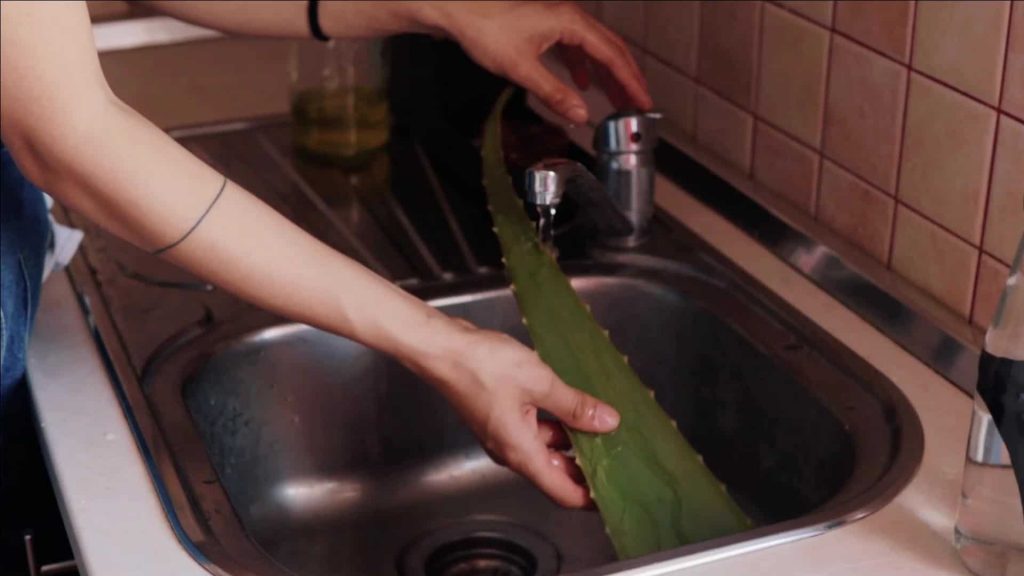

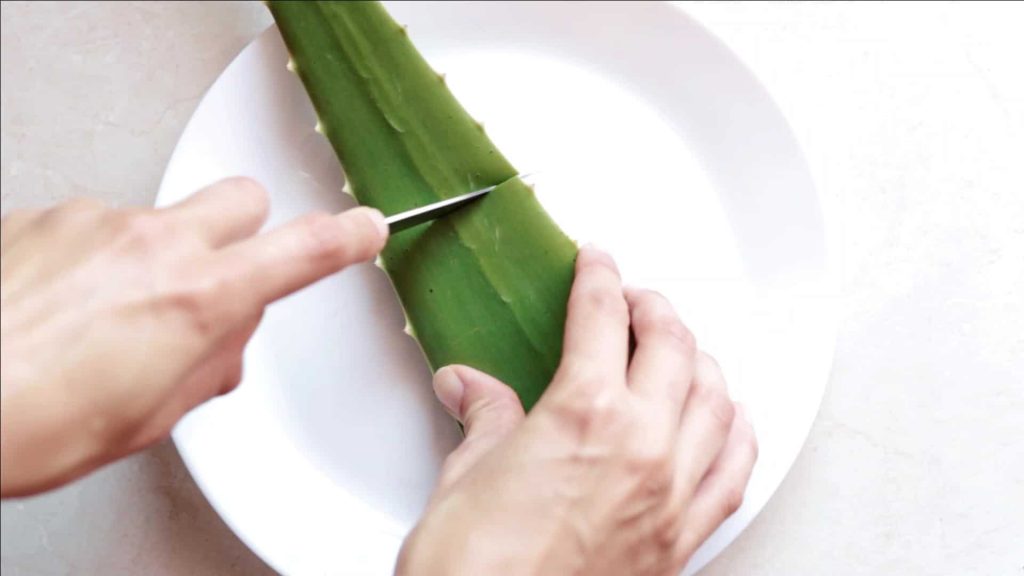
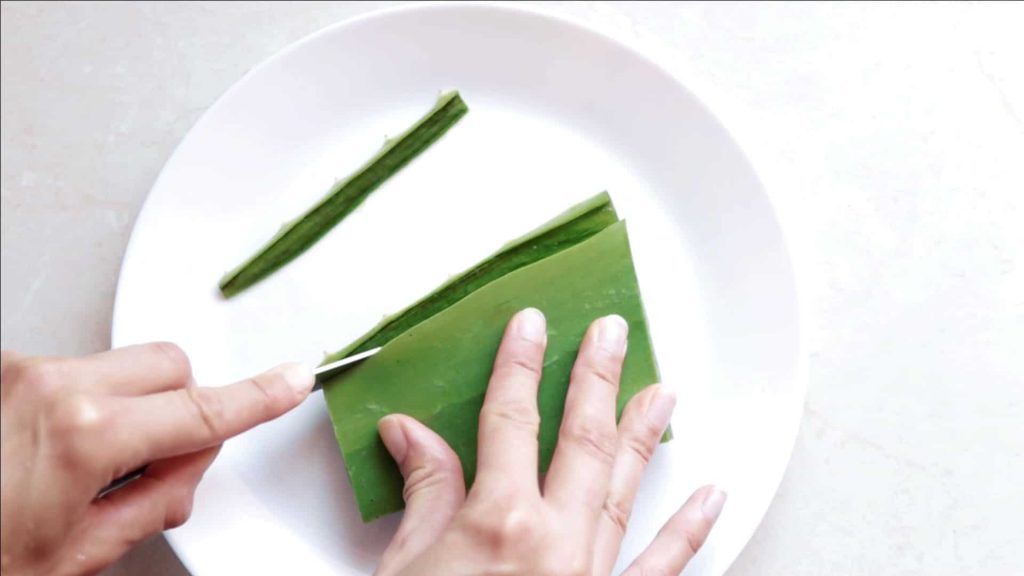
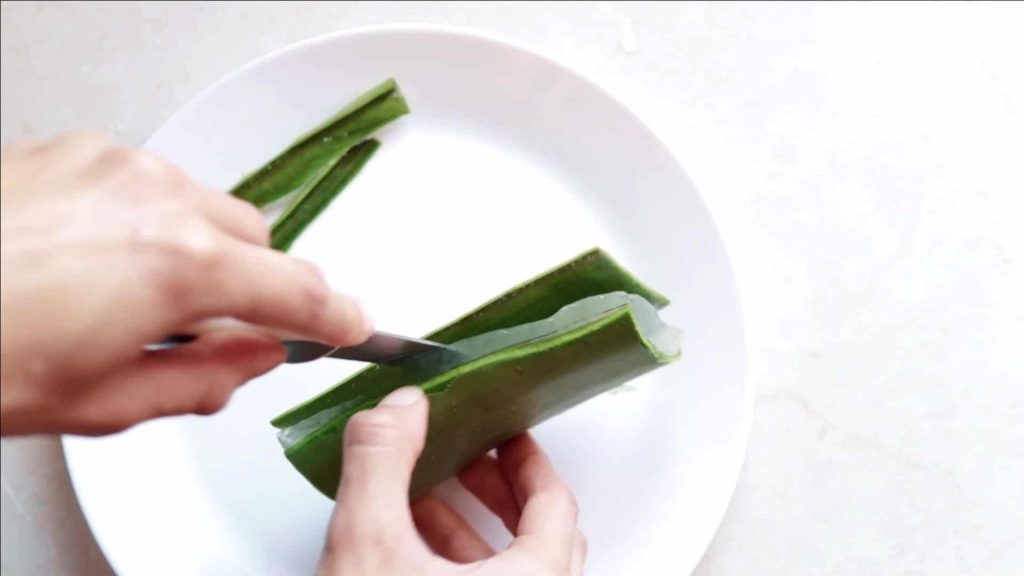
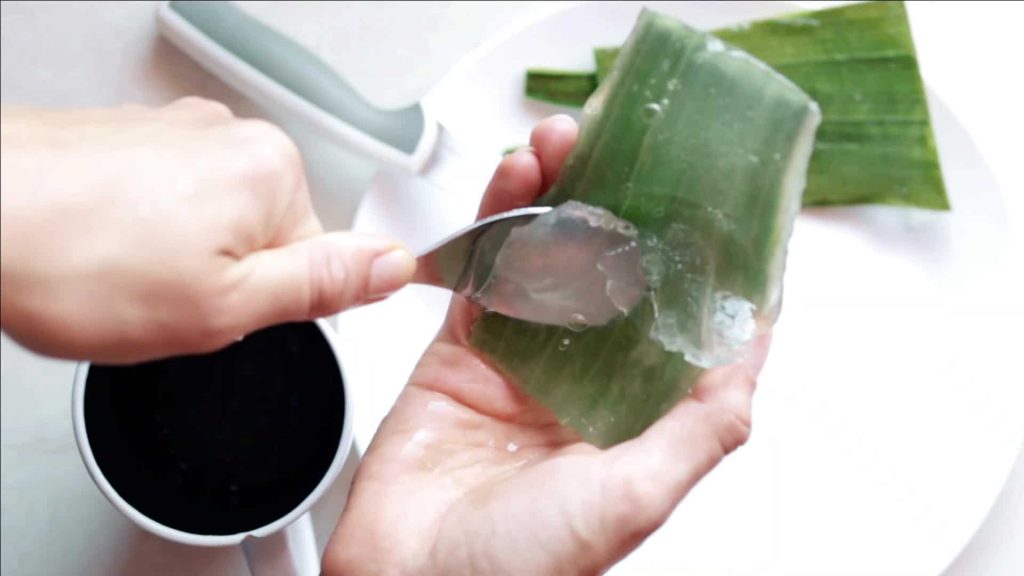
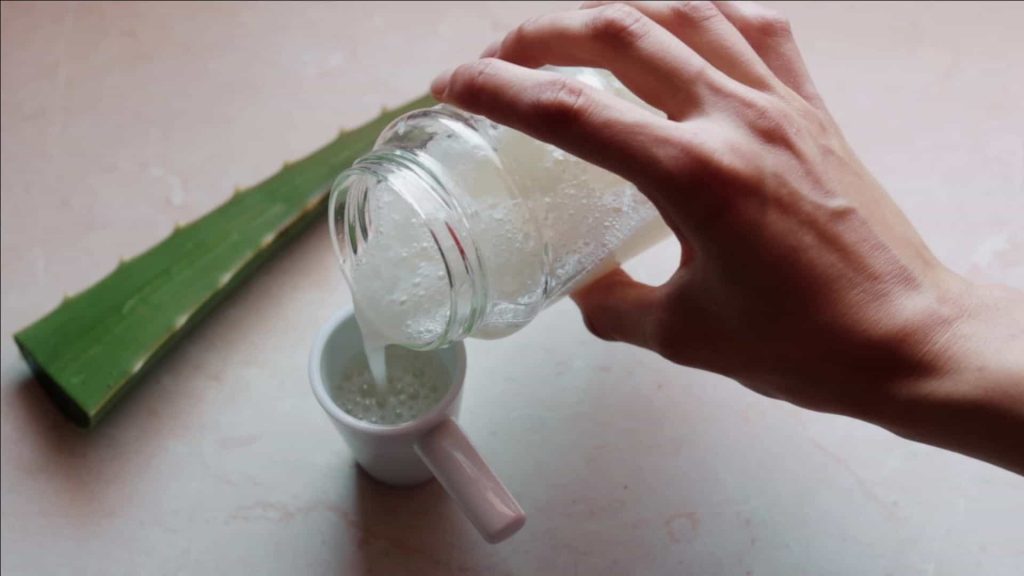

Wonderful!!!
My husband’s been loving this recipe for about 6 months now – thank you! Question, however: is there any need to use gel specifically instead of juice? Our local co-op sells the juice for cheaper (and in glass jars, compared to aloe gel that’s only sold in plastic), so I was curious about your thoughts on switching to juice instead of the thicker gel? Thanks!
Hey. I’m happy to hear your husband’s been enjoying the DIY recipe! Using aloe juice instead of gel will change the consistency, but I don’t see why it shouldn’t work. Please let me know the final result if you try it out. 🙂
I’ve just tried it, its amazing! Thank you for sharing your recipe and tips! <3
Hi, if you can delete my previous comment please, going to leave a copy of it down below, just wanted to add a question.
I’ve just tried it, its amazing! Thank you for sharing your recipe and tips! <3
Q: What do you think/feel about adding coconut oil? and do you think there are other plants like Aloe Vera that could be of benefit to add, despite other essential oils?